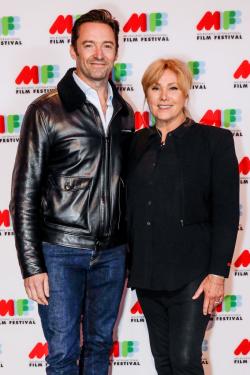

Annual report 2017-18
Strategic Priority 2 2018
Digitisation enables users to connect the patchwork of dispersed cultural collections. We are committed to becoming a leader in the stewardship of Australia’s audiovisual collections in the digital environment. While we already undertake significant digitisation activity as part of our management of the national audiovisual collection, what is required to ensure the long-term availability of our cultural memory as a whole is greater cross-sector collaboration, legislative reform, a strong budgetary commitment and increased private sector support.
Outcome: We will become a leader in the stewardship of Australia’s digital audiovisual collections and collaborate across all tiers of government to advance the digitisation and discoverability of Australia’s cultural collections
| Objective | Initiatives/strategies to achieve against outcome and objectives, 2017–18 to 2020–21 | Target 2017–18 | Result 2017–18 |
| Objective 2A Increase the discoverability of NFSA’s digital collection | 2A.1 Enhance the NFSA’s digital collection content and data discoverability | Implementation of a federated search for NFSA websites | Not achieved |
| Objective 2B Increase our capacity and capability to manage digital preservation of all collection formats in accordance with best practice models and working within our resources | 2B.1 Provide targeted training and development opportunities for staff in the management of digital audiovisual assets, for example in film digitisation and digital film workflows | There is an increasing number of targeted training and development opportunities for staff | Achieved |
| 2B.2 Develop a Digitisation Strategy for the national audiovisual collection | Digitisation Strategy developed and successfully implemented | Achieved | |
| Objective 2C Ensure our management of digital collections is aligned with international best practice and ensure sector leadership through continuous learning and targeted training | 2C.1 Support and drive knowledge exchange and thought leadership in relation to digital cultural collections | Demonstrated sector leadership through engagement in national and international forums | Achieved |
| Objective 2D Work with others to champion the development of a national framework to enable increased access to Australia’s cultural collections | 2D.1 Continue work on a collaborative business plan to address the large-scale digitisation of audio and video tape collections across the National Collecting Institutions by 2025 | Business plan developed outlining long-term plan for large-scale digitisation | Not achieved |
| Criterion source: Corporate Plan 2017–18 to 2020–21 page 7 | |||
Objective 2A
Increase the discoverability of the NFSA’s digital collection
2A.1 Enhance the NFSA’s digital collection content and data discoverability
| Target | Result |
|---|---|
| Implementation of a federated search for NFSA websites | Not achieved |
| Criterion source: Corporate Plan 2017–18 to 2020–21 page 7 | |
What we achieved
Through the ongoing development of our website, online exhibitions, curated collections, Facebook page and YouTube channels we continue to create new pathways for users to discover our digital collection content (see 1B.1 and 1B.2). Enhancements to nfsa.gov.au help lead visitors to related content, offering them more options to enhance their experience and prolong the time spent on our website.
The NFSA has progressed with replacing the existing website search solution, Google Search Appliance, with capability that will provide an improved user experience and also assist with future search capability across all digital collection content. We undertook extensive benchmarking with Australian cultural organisations and a proof of concept has been developed. Enhanced search capability is expected to be introduced in early 2019.
Objective 2B
Increase our capacity and capability to manage the digital preservation of all collection formats in accordance with best practice models and working within our resources
2B.1 Provide targeted training and development opportunities for staff in the management of digital audiovisual assets, for example in film digitisation and digital film workflows
| Target | Result |
|---|---|
| There is an increasing number of targeted training and development opportunities for staff | Achieved |
| Criterion source: Corporate Plan 2017–18 to 2020–21 page 7 | |
What we achieved
In 2017–18, there was an increase in training for technical staff with the introduction of new digitisation equipment as we implement the NFSA Digitisation Strategy and invest in infrastructure to support mass digitisation. Digital and Media Operations staff received training in specific software applications for editing, colour correction and audio post-production. We continually monitor digitisation processes and workflows to ensure that we achieve efficient and effective outcomes.
2B.2 Develop a Digitisation Strategy for the national audiovisual collection
| Target | Result |
|---|---|
| Digitisation Strategy developed and successfully implemented | Achieved |
| Criterion source: Corporate Plan 2017–18 to 2020–21 page 7 | |
What we achieved
The NFSA Digitisation Strategy covers 2018–2025 and sets out how we will meet digitisation challenges and take a leadership role in the digitisation of Australia’s audiovisual material.
We established a Digitisation Working Group to oversee the implementation of the Digitisation Strategy. The Collection Management Committee and Media Asset Management Governance Committee also provide input.
We are implementing the Digitisation Strategy through three streams:
- Stream 1: NFSA Digital and Media Operations—enhanced digitisation operations resulting in a 150% increase on digitisation output by 2018–19
- Stream 2: Deadline 2025—development of a national framework for mass digitisation to preserve the audiovisual collections managed by the NFSA and other National Collecting Institutions
- Stream 3: National Centre for Excellence in Audiovisual Heritage—a National Centre dedicated to excellence in all aspects of audiovisual preservation including but not limited to digitisation, data storage and data delivery.
All three streams of work commenced in the first half of 2018.
Key milestones to date include:
- drafting the NFSA Digitisation Strategy
- formalising NFSA Preferred File Formats (Digital Standards)
- streamlining and documenting Digital and Media Operations workflows
- documenting Digital and Media Operations capabilities and demonstrating resource capabilities and constraints in terms of equipment, staff numbers and expertise in film, audio and video
- commencing establishment of the pilot Digitisation Cell (mass digitisation equipment) at NFSA Headquarters
- progressing discussions with stakeholders regarding the National Centre for Excellence in Audiovisual Heritage.
We monitor digitisation success through established KPIs and report progress to the NFSA Board and Audit Committee.
Objective 2C
Ensure our management of digital collections is aligned with international best practice, and ensure sector leadership through continuous learning and targeted training
2C.1 Support and drive knowledge exchange and thought leadership in relation to digital cultural collections
| Target | Result |
|---|---|
| Demonstrated sector leadership through engagement in national and international forums | Achieved |
| Criterion source: Corporate Plan 2017–18 to 2020–21 page 7 | |
What we achieved
In 2017–18, we built on the momentum of the Deadline 2025 report in building a collaborative approach towards audiovisual mass digitisation opportunities among key national audiovisual collections. We further refined our internal digitisation and digital delivery capacities and workflows in preparation for undertaking our critical leadership role in this context. We released NFSA: Strategic Vision for a Digital Archive in April 2018, supported by the CEO’s public presentations to stakeholders in Canberra, Sydney and Melbourne.
Our 2017 Digital Directions symposium on 18 October targeted the user experience in the digital environment, with thought leaders, policy makers and key players in the galleries, libraries, archives and museums (GLAM) sector sharing their experiences. Digital Directions has become an essential annual event for engagement in this field.
We actively participated in the April 2018 FIAF (International Federation of Film Archives) Congress forums on digital delivery and the sharing of cultural collections, and in the September 2017 IASA (International Association of Sound and Audiovisual Archives) conference on cultural collection, integration and innovation in a digital context. CEO Jan Müller presented a keynote address on digital futures at the April 2018 SEAPAVAA (South East Asia and Pacific Audio Visual Archives Association) Conference in Bangkok.
Our highly successful NFSA Restores program released new top quality digital film restorations including Shame (Steve Jodrell, Australia, 1988) at the Melbourne International Film Festival and the international premiere of Three Days to Live (Tom Gibson, USA, 1924) at the Pordenone Silent Film Festival 2017, Italy.
Objective 2D
Work with others to champion the development of a national framework to enable increased access to Australia’s cultural collections
2D.1 Continue work on a collaborative business plan to address the large-scale digitisation of audio and video tape collections across the national collecting institutions by 2025
| Target | Result |
|---|---|
| Business plan developed outlining long-term plan for large-scale digitisation | Not achieved |
| Criterion source: Corporate Plan 2017–18 to 2020–21 page 7 | |
What we achieved
In 2017–18 we continued our work building a collaborative approach to addressing the increased challenge of digitising our audio and video magnetic tape collections by 2025. Collaborating with the Australian Institute of Aboriginal and Torres Strait Islander Studies (AIATSIS), the Australian Broadcasting Corporation (ABC), the National Archives of Australia (NAA) and the National Library of Australia (NLA), these objectives now form some of the fundamental requirements for our proposed National Centre for Excellence in Audiovisual Heritage.While we continue to digitise our collection, the business plan and implementation of the multi-agency National Centre for Excellence in Audiovisual Heritage is currently in the development stage. We will be releasing a Digitisation Strategy in 2018-19 which will address large scale digitisation.
Case Study: FEMINIST FILM CLASSICS DIGITALLY RESTORED!
NFSA Restores, our digital restoration program to revive Australia’s cinema icons, went from strength to strength in 2017–18.

Actors Deborra-lee Furness and her husband Hugh Jackman joined forces with us to celebrate the digital restoration of the ground-breaking 1988 film Shame at a sold-out screening on 13 August as part of the Melbourne International Film Festival 2017.
Furness said, ‘I am thrilled that the NFSA is restoring films like Shame, so that beautifully crafted Australian classics will continue to have an audience’.
The couple’s star power generated significant media coverage for the film restoration which was featured by Ten News, Studio 10, ABC News Breakfast, Radio National and The Herald Sun.
Director Steve Jodrell said he was also delighted by our work to restore Shame. ‘It has an immaculate freshness and luminosity that reminds me of its initial screening almost 30 years ago. There’s a powerful message in the film – sadly, one that is even more relevant today than when it was first released.’
NFSA Chief Curator Gayle Lake said, ‘Shame is an empowering film with an unforgettable performance by Deborra-lee. It deals with women’s rights, gender roles and domestic violence – it is thought-provoking material.’
Another feminist classic, the 1979 film My Brilliant Career, was digitally restored and premiered to a sold-out audience on 13 June at the Sydney Film Festival 2018.
Producer Margaret Fink said, ‘Thanks to the NFSA’s digital restoration, My Brilliant Career can—today and into the future—be viewed by many young women who need to know they can have options’.
Director Gillian Armstrong added, ‘I am thrilled that our beautiful new digital print premiered at my much loved Sydney Film Festival. It is still beautiful to look at; many thanks to the NFSA for their painstaking work and passion for preserving our heritage. Margaret Fink’s film launched four brilliant careers: Judy Davis, Sam Neill, cinematographer Don McAlpine, and my own. They and all the cast are wonderful, and Miles Franklin’s message is still sadly just as pertinent today.’
Hugh Jackman and Deborra-lee Furness at the premiere of NFSA Restores: Shame at the Melbourne International Film Festival 2017
The National Film and Sound Archive of Australia acknowledges Australia’s Aboriginal and Torres Strait Islander peoples as the Traditional Custodians of the land on which we work and live and gives respect to their Elders both past and present.